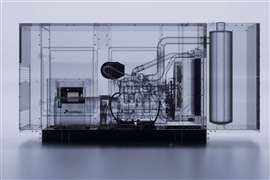Changes And Innovations At L’Orange
22 January 2018

BY ROBERTA PRANDI
Andreas Lingens, the newly appointed president of L’Orange, the Germany-based injection system supplier to large engine manufacturers worldwide, said he will stress customer satisfaction and collaboration with international customers.
Lingens took on the position of president Jan. 1, replacing Erik Manning, who has been named executive vice president Operations, heading up production, assembly, logistics and purchasing at l’Orange’s mother company, Rolls-Royce Power Systems (RRPS).
Lingens and Manning had held the position of CEO of L’Orange together since Oct. 1, 2017.Other changes may be on the horizon. According to recent media reports, Rolls-Royce is seeking to sell off its L’Orange fuel injector business. Bloomberg News said Rolls-Royce wants to raise as much as US$700 million from the disposal of L’Orange.
Lingens has many years of experience in the international engineering sector with a focus on engine development in the automotive and large diesel area. For the past five years he was executive vice president Research & Development at Rolls-Royce Power Systems.
“I am very much looking forward to this new challenge and to collaborating with our international customers,” he said. “As head of R&D and having worked on several joint projects with the L´Orange team, I have enjoyed the opportunity to jointly develop innovative and reliable fuel system technology for RRPS´ diesel lineup. As an example, the new 2500-bar S4000 common rail injection system with closed loop fueling controls, paved the way for a non-aftertreatment off-road Tier 4 solution.
“I will be actively shaping and driving the company’s ambitious goals for the future – and always with our customers’ satisfaction as top priority. This is what my key focus will be.”
L’Orange has very recently introduced an anti-sticking pump element for its injection components, which delivers from four to ten times longer running times.
The company said that the new pump element features a special coating and a scraper ring that can largely reduce the formation of lacquering, a condition caused by deposits in the barrel that can significantly impede the pump’s operation.
Lacquering is partly attributable to an incompatibility between fuel and lubricating oil – especially due to the low total base number (TBN) of the engine oil. The TBN value describes the size of the so-called alkaline reserve of a motor oil. With its basic property, this serves to neutralize the fuel’s harmful acids.
Due to the capillary effect – reinforced by the additional stroke movement of the plunger – the lubricating oil rises up on the plunger and mixes with the fuel. This results in lacquering in the barrel as well as in the grooves. The clearance between plunger and barrel is reduced, which ultimately leads to plunger sticking.
Other influencing factors include: The mixture incompatibility of different fuels, for example, between heavy fuel oil and marine diesel oil or marine gas oil; fuel temperatures of over 150°C in the pump element; too fast switching between the fuels; and contamination with metal traces or the admixture of lubricating oils to heavy fuel oil.
Common measures to reduce the formation of lacquering include moving the control rack with the engine switched off, elaborate cleaning of the pump elements, and adherence to the permissible fuel viscosities and temperatures as per OEM’s provision. All of these are often time consuming or not effective enough, according to L’Orange.
To reduce the formation of lacquering and therefore sustainably lower the risk of plunger sticking, L’Orange optimized its pump elements in terms of geometry, surface coating and added a scraper ring. The geometry insures that lubricating oil and fuel are separated which eliminates the main cause of the formation of lacquering. In addition to that, the scraper ring serves as protection in case some lacquering occurs in spite of the separation between lubrication oil and fuel.
The scraper ring effectively scrapes the lacquering off the barrel and prevents the increase in the lacquering layer in the barrel. The new special coating and the microgrooves do not allow the lacquering to even develop on the plunger.
L’Orange has calculated that this solution can extend the running time of the injector pump by four to ten times compared to standard products.
POWER SOURCING GUIDE
The trusted reference and buyer’s guide for 83 years
The original “desktop search engine,” guiding nearly 10,000 users in more than 90 countries it is the primary reference for specifications and details on all the components that go into engine systems.
Visit Now
STAY CONNECTED




Receive the information you need when you need it through our world-leading magazines, newsletters and daily briefings.
CONNECT WITH THE TEAM












